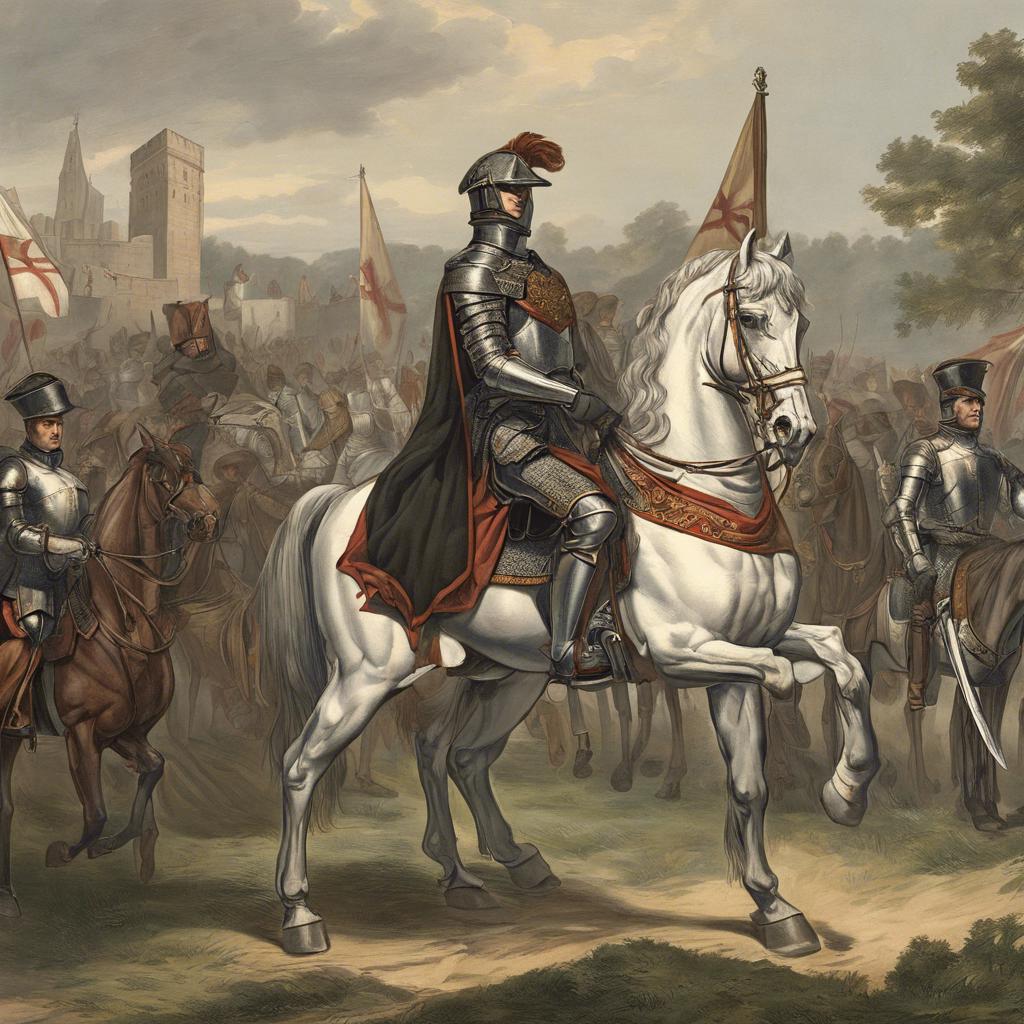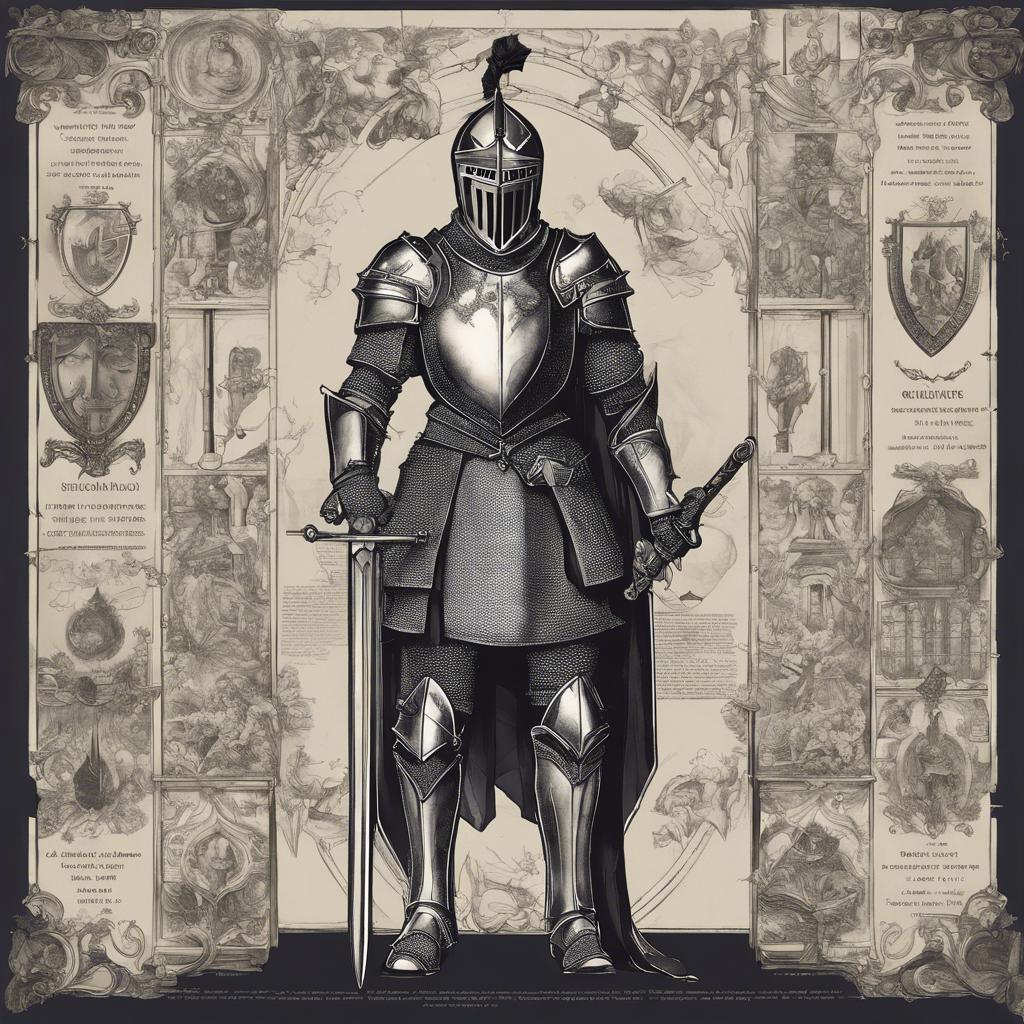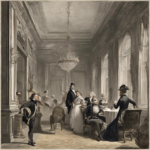In the annals of European history, the knights of the Regency era stand as formidable and noble defenders of chivalry and honor. Emerging in the early 19th century amidst the tumultuous political landscape of wartime Europe, these gallant warriors embodied the ideals of bravery, loyalty, and nobility. From their expert horsemanship to their mastery of swordplay, the Regency era knights were the epitome of martial prowess and chivalric virtue. Join us as we delve into the world of these illustrious figures and explore the legacy they left behind in the annals of history.
Step Into the World of Cheryl Bolen
Dive into the enchanting stories of love, intrigue, and elegance set in the Regency Era. Cheryl Bolen's novels offer timeless romance and captivating tales that will leave you wanting more.
Explore Cheryl Bolen's Books Now
Regency Era Knights: A Closer Look at Chivalry and Honor
In the Regency Era, knights were revered for their embodiment of chivalry and honor. These heroic figures were known for their courage, loyalty, and dedication to serving their lord and protecting the innocent. Knights followed a strict code of conduct that emphasized justice, courtesy, and respect for women.
One of the defining characteristics of a Regency Era knight was their unwavering commitment to upholding their honor. Knights were expected to be truthful, honorable, and brave in all their actions. They defended the weak, fought for justice, and always kept their word. Honor was paramount to a knight’s reputation and standing in society.
Chivalry was at the heart of a knight’s code of conduct. Knights were expected to be courteous, kind, and gentle, especially towards women. They were skilled in combat, but also valued compassion and empathy. A knight’s duty was to protect the innocent, uphold justice, and live a life of integrity. The legacy of Regency Era knights continues to inspire admiration and respect to this day.
The Legacy of Regency Era Knights in Literature and Popular Culture
During the Regency era, knights played a significant role in literature and popular culture, leaving behind a lasting legacy that continues to captivate audiences to this day. These noble and chivalrous warriors were often portrayed as valiant protectors, bound by honor and duty to defend the realm and its people.
In literature, Regency era knights are frequently depicted as gallant heroes who embark on daring quests, rescue damsels in distress, and uphold the principles of chivalry. Their stories often explore themes of bravery, loyalty, and sacrifice, resonating with readers of all ages. From epic poems to romantic novels, these characters have stood the test of time, inspiring countless adaptations and retellings.
Popular culture has also embraced the legacy of Regency era knights, with movies, TV shows, and video games often featuring these iconic figures in swashbuckling adventures and epic battles. Their armor glinting in the sunlight, their swords flashing in the moonlight – these knights have become symbols of courage and nobility, captivating audiences around the world.
Evolving Codes of Conduct for Regency Era Knights: From Jousting to Courtship
In the Regency Era, knights were expected to uphold a strict code of conduct that governed every aspect of their lives, from the battlefield to the ballroom. As times changed and society evolved, so too did the codes of conduct for these noble warriors. What was once a focus on jousting and chivalry began to shift towards the intricacies of courtship and social decorum.
One key aspect of the evolving codes of conduct for Regency Era knights was the emphasis on etiquette and manners, especially when it came to interactions with the opposite sex. Knights were expected to be gallant and courteous towards ladies, whether on the dance floor or during a leisurely stroll in the garden. Respectful behavior towards women was paramount, with an emphasis on proper introductions, polite conversation, and appropriate physical contact.
Furthermore, the concept of honor and integrity played a significant role in the lives of Regency Era knights. Upholding one’s word and maintaining a sense of dignity and respectability were essential components of the knightly code. Whether on the battlefield or in the ballroom, these noble warriors were expected to conduct themselves with grace, valor, and a strong sense of integrity.
Exploring the Fashion and Armor of Regency Era Knights
The Regency Era was a time of elegant fashion and sophisticated armor for knights. During this period, knights showcased their status and heritage through elaborate clothing and intricately designed armor. Let’s delve into the fascinating world of Regency Era knights and explore their fashion and armor.
Fashion:
- Regency Era knights often wore richly embroidered doublets and breeches made from luxurious fabrics such as velvet and silk.
- They favored ornate waistcoats adorned with intricate patterns and embellishments like lace and gold thread.
- Accessories such as plumed hats, leather gloves, and stylish boots completed their fashionable ensemble.
| Element | Description |
| Doublets and Breeches | Luxurious fabrics, rich embroidery |
| Waistcoats | Intricate patterns, lace, gold thread |
Armor:
- Regency Era knights wore suits of armor crafted from steel, designed to protect them in battle.
- Their armor featured elaborate etchings and engravings, showcasing their heraldry and personal crests.
- Helmets with visors and gauntlets provided additional protection, while breastplates and greaves defended vital areas.
In Retrospect
the knights of the Regency era played a significant role in shaping the society and culture of their time. Their code of chivalry and honor, their fierce loyalty to their king and country, and their skills in combat and battle were all factors that made them revered figures in history. As we reflect on the legacy of these noble warriors, we are reminded of the values and virtues that they embodied – courage, integrity, and selflessness. Their stories serve as a powerful reminder of the enduring power of the knightly ideal, and continue to inspire us to this day. Let us honor their memory and strive to uphold the principles they lived by, for in doing so, we pay tribute to their enduring legacy.


